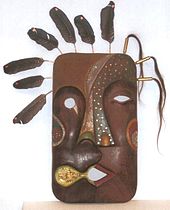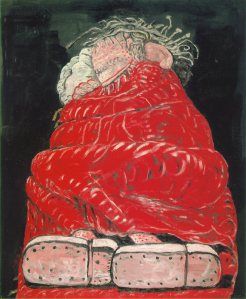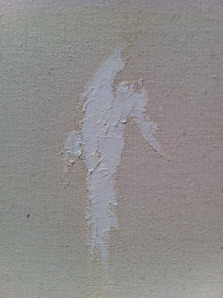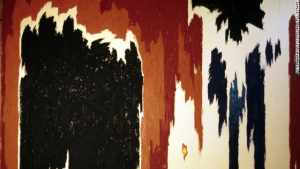The Athabascn tribe is one of the oldest to live in Alaska, from which they came across from Russia on the land bridge a long time ago. The reason I chose this tribe was because I am an Athabascan also. My great grandpa grew up in a village and raised my grandpa with all the religion and tradition that they did so I have a pretty good sense of what went on. The Athabascan tribe is located in the interior of Alaska around Fairbanks, Healy, and other close towns and villages. The Athabascan’s were very creative people in which they created a lot of different kinds of designs on their winter gear such as gloves and hats. They also included artwork into their basket weaving which was a big part of what they were recognized for throughout Alaska. They were big into mask making, which there were some very amazing masks built as a way to join in and participate in traditions and things like that. This piece is called “De Maa?” by Kathleen Carlo-Kendall. She is an Athabascan professional carver from Alaska. A little background on this mask, like I mentioned before, were used traditions and story-telling. The mask would be a way for the performer to become a character in the story such as an animal or the hunter, sharing stories of their greatest hunts till that day.
Another form of art that the Athabascan tribe created was beadwork. They were very big into this and put this on a lot of the things that they used to live for example gloves, pillows, blankets, hats, necklaces, earrings, etc. Here are gloves made by Susie Ondolo, which she is also Athabascan. She uses hundreds, almost thousands of beads when making a pair of gloves all in different designs. The actual gloves were from moose hide which were ably to keep women warm during the cold winters. Another piece she made with beads are earrings. She made them from porcupine quills which then put beads on after making the frame of the earrings.
Sources:
http://www.alaskanative.net/en/main-nav/education-and-programs/cultures-of-alaska/athabascan/
http://en.wikipedia.org/wiki/Kathleen_Carlo-Kendall
http://alaskanativecrafts.com/bead.htm

















